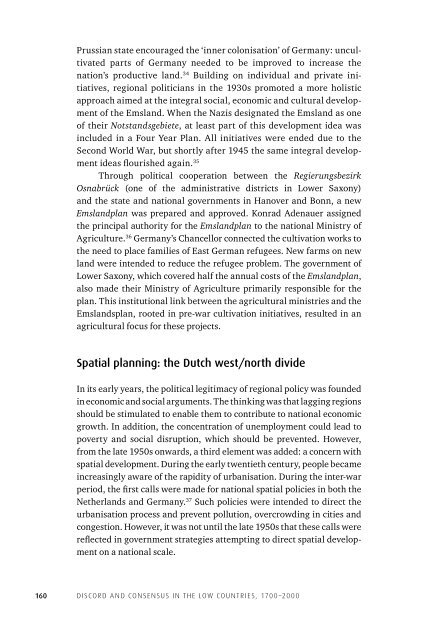Discord Consensus
7aze300jFJo
7aze300jFJo
You also want an ePaper? Increase the reach of your titles
YUMPU automatically turns print PDFs into web optimized ePapers that Google loves.
Prussian state encouraged the ‘inner colonisation’ of Germany: uncultivated<br />
parts of Germany needed to be improved to increase the<br />
nation’s productive land. 34 Building on individual and private initiatives,<br />
regional politicians in the 1930s promoted a more holistic<br />
approach aimed at the integral social, economic and cultural development<br />
of the Emsland. When the Nazis designated the Emsland as one<br />
of their Notstandsgebiete, at least part of this development idea was<br />
included in a Four Year Plan. All initiatives were ended due to the<br />
Second World War, but shortly after 1945 the same integral development<br />
ideas flourished again. 35<br />
Through political cooperation between the Regierungsbezirk<br />
Osnabrück (one of the administrative districts in Lower Saxony)<br />
and the state and national governments in Hanover and Bonn, a new<br />
Emslandplan was prepared and approved. Konrad Adenauer assigned<br />
the principal authority for the Emslandplan to the national Ministry of<br />
Agriculture. 36 Germany’s Chancellor connected the cultivation works to<br />
the need to place families of East German refugees. New farms on new<br />
land were intended to reduce the refugee problem. The government of<br />
Lower Saxony, which covered half the annual costs of the Emslandplan,<br />
also made their Ministry of Agriculture primarily responsible for the<br />
plan. This institutional link between the agricultural ministries and the<br />
Emslandsplan, rooted in pre-war cultivation initiatives, resulted in an<br />
agricultural focus for these projects.<br />
Spatial planning: the Dutch west/north divide<br />
In its early years, the political legitimacy of regional policy was founded<br />
in economic and social arguments. The thinking was that lagging regions<br />
should be stimulated to enable them to contribute to national economic<br />
growth. In addition, the concentration of unemployment could lead to<br />
poverty and social disruption, which should be prevented. However,<br />
from the late 1950s onwards, a third element was added: a concern with<br />
spatial development. During the early twentieth century, people became<br />
increasingly aware of the rapidity of urbanisation. During the inter-war<br />
period, the first calls were made for national spatial policies in both the<br />
Netherlands and Germany. 37 Such policies were intended to direct the<br />
urbanisation process and prevent pollution, overcrowding in cities and<br />
congestion. However, it was not until the late 1950s that these calls were<br />
reflected in government strategies attempting to direct spatial development<br />
on a national scale.<br />
160<br />
DISCORD AND CONSENSUS IN THE LOW COUNTRIES, 1700–2000


